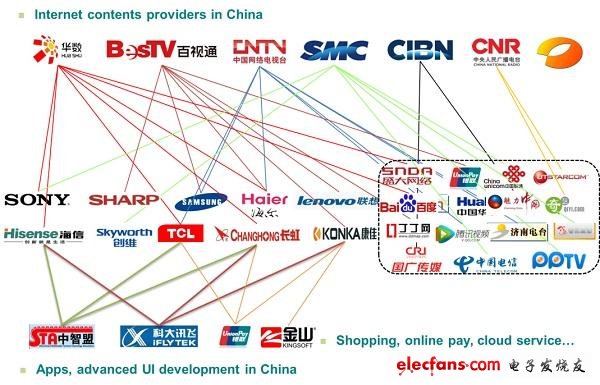According to DisplaySearch, according to NPD DisplaySearch survey statistics, China's domestic TV shipments in 2011 were 44.5 million units, an increase of more than 17% from 2010. The sales and shipment of LCD TVs in China are slightly better than expected. This is mainly due to the expiration of the city's trade-in and some household appliances subsidy policies for rural areas, as well as the Spring Festival holiday earlier than in previous years. .
In 2012, especially in the first half of the year, overall demand growth is expected to slow down. Demand overdraft, inflationary pressures, cost surges, the gradual fade-out of demand stimulus plans, and real estate regulation continue to be the main factors constraining demand growth. In the first half of this year, in addition to the three-day long holiday of "May Day", the demand for mainland China from the European Cup and the London Olympics will be driven. It is expected that the seasonal changes in demand in mainland China will be similar to the 2008 Beijing Olympics, traditional 6 The off-season sales in August will be improved to a certain extent. The impact of the withdrawal of the subsidy policy in the second half of the year will be gradually eliminated, and the market will return to normal consumer demand. In addition to the positive sales targets of local brand manufacturers and panel manufacturers, the positive growth of demand in the second half of 2012 is still worth looking forward to.
In view of the global TV demand, especially the weak growth of market demand in developed countries and regions, and the fact that Japanese manufacturers have suffered a severe setback in this round of industrial troughs, we believe that the mainland China flat-panel TV industry is undergoing a critical period of transformation, including industrial growth The transformation of methods, the strategic focus of brand manufacturers, the technological evolution of TV products, new business models, and the shift of the focus of channel development.
The first is the transformation of industrial growth
The financial turmoil that began in 2008 has led to weak demand in the market for several years, and some countries around the world have launched related demand stimulus plans. The Chinese mainland government has also launched timely policies including 'home appliances going to the countryside', 'swapping old ones for new ones', and energy saving subsidies in some areas. Since the end of November 2011, the subsidies for home appliances going to the countryside have gradually faded out, and the trade-in replacement has also been withdrawn at the end of 2011. The energy-saving subsidies in some areas have also ended in early 2012. China's domestic flat-panel TVs have entered the post-subsidy era-the old demand stimulus plan shows that flat-panel TV demand has come out of the downturn, and it has also overdrawn a considerable portion of future demand; with the withdrawal of the subsidy plan, domestic TV demand has undergone substantial adjustments in the short term There may be further subsidy policies in the later period, but their strength and scope will be greatly reduced, and their help to increase demand is also very limited. The growth mode of China's local TV industry will return to its own market law, and the industry will be driven by the real needs of consumers. This transformation process will be completed in 2012.
The second is the shift of brand strategy focus
Although the mainland Chinese TV market is the world's largest flat-panel TV market, competition is fierce. Many local brand manufacturers and almost all international first-tier brands are fighting on the same land. With the gradual maturity of the market, local first-line brands have encountered development bottlenecks in the single market of mainland China, and the focus of future brand strategies is gradually shifting to overseas markets.
Once again, it is the shift of TV product technology evolution direction
Looking back at the development trend of flat-panel TV technology in the past 10 years, in the first 5 years or so, the focus of TV product technology development was almost panel technology, and then slowly transitioned to panel technology and other TV hardware specifications. The focus now and in the future is more Turn more to the TV's own specifications, content and services. Based on full competition, the technological evolution of Chinese TV products is even faster than the European, American and Japanese markets. The following chart is the relationship between the major brand manufacturers in the development of smart TV content and applications.
Figure 1. Relationship between some content providers of smart TV in mainland China

Some Content Provider Relationships for Smart TV in Mainland China
Rechargeable Blenders are our new product series. With 12V, 160W, two 2000Ah battery, USB plug, charge time just 3 hours while can use 12 to 15 times. Our Rechargeable Blenders have stainless steel body, 450ml heat resisted glass bottle and 6pcs ice crushing blades. What's more, our rechargeable blenders with safety lock system.
Discription of Rechargeable Blenders
Size: 450ml
Jar Material: Heat resisted borosilicate glass bottle
Plug Type: USB
Working Time: 40s working time and 6s auto stop in empty loading
Rechargeable Blenders
Rechargeable Blenders,Usb Rechargeable Blender,Rechargeable Hand Blender,Cordless Rechargeable Hand Blender
Flying Electronic Co., Ltd , https://www.flyingelectronic.com
